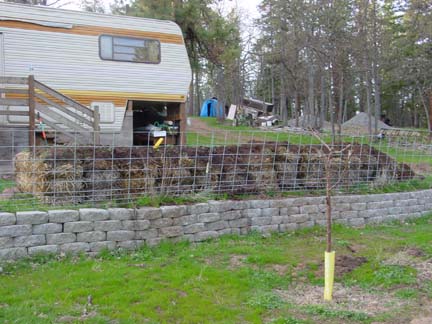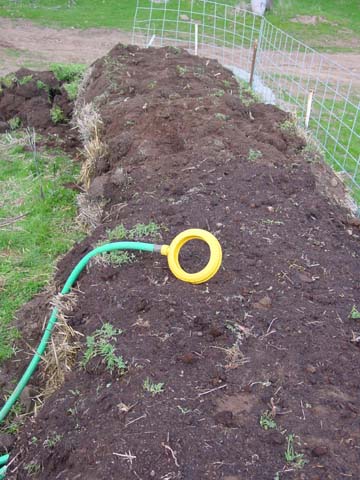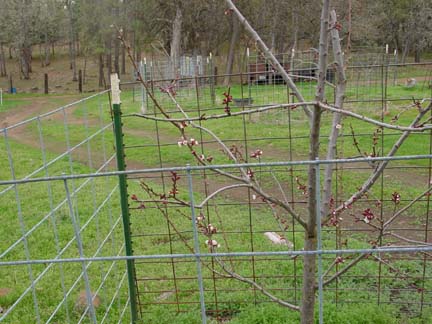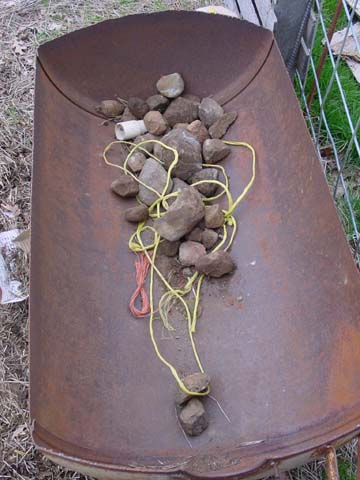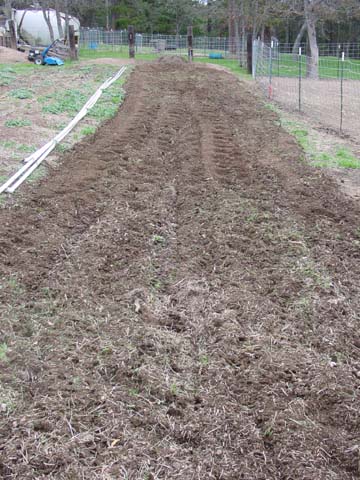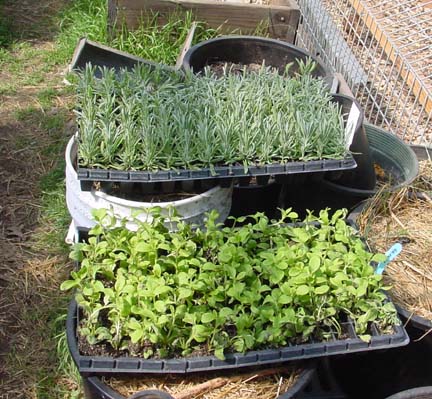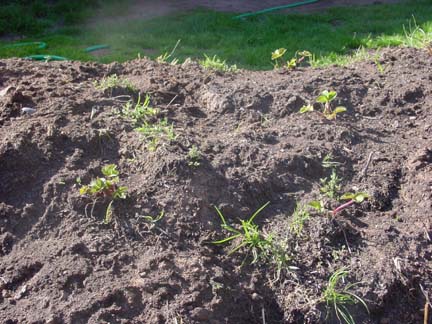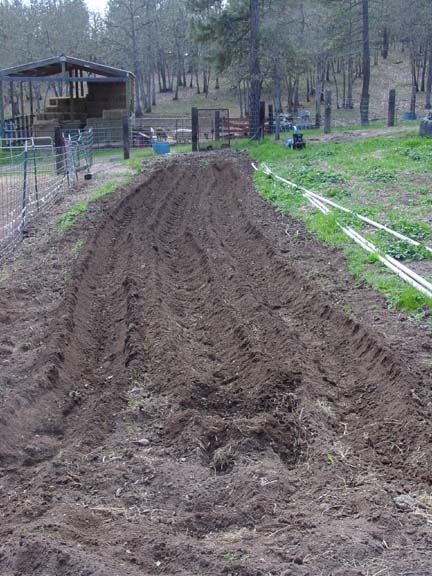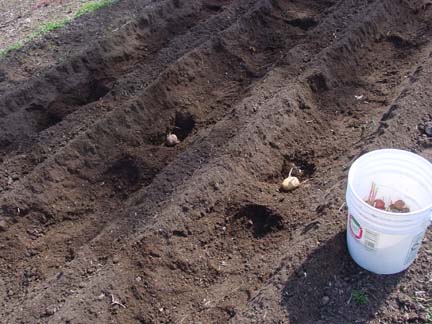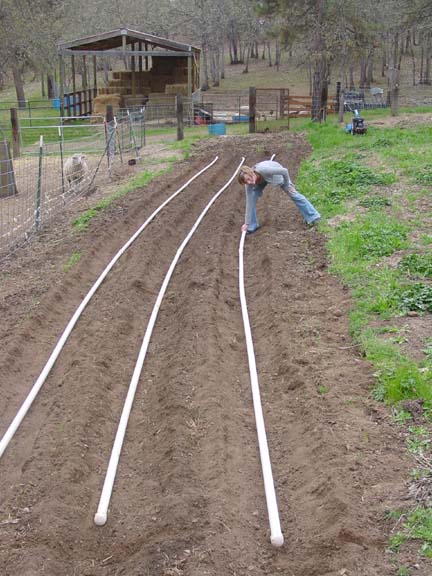Garden Notes for AprilApril 4:
We were impressed enough with how the first section of spoiled hay bales is doing (the strawberries planted last week are generating leaves) that we brought home another load of spoiled bales and doubled the size of the experimental strawberry patch.
April 8:
One of the things we learned from studying the Shakers is to time plantings according to what other plants are doing. For example, when oak leaves burst out it's time to plant corn. Today we sighted the first apricot blossoms which told us it was time to rototill the main garden in preparation for getting our seed potatoes into the ground.
The upper half of the main garden has two benches, and since we grew potatoes on the upper bench last year, we'll plant other things there this year, and use the lower bench to grow our tasty baby reds and yukon golds.
The one crop we're always sure to bring in is rocks, and each pass of the rototiller is sure to turn up a few more. Also, we try to keep an eye out for any polypropylene bale twine. We'd rather that the hay folk used wire or sisal, since both of those decompose over time in the ground, but they use polypropylene precisely because it never rots. That way their bales won't come undone, and there are cases where we take advantage of that such as the spoiled hay raised bed we're trying out as a short cut to a well-composed raised bed, but for the most part, the poly twine is a pain. It likes to wrap itself around the rototiller's tines (at which point you have to stop and spend many minutes with a sharp knife removing it) or even worse, it will unravel and then wrap itself around the leg of a chicken or duck causing them to lose a foot and die.
Our rototiller is well made, works quickly, and in fairly short order, the lower bench had its first tilling done. We'll leave it like that for a couple of days, and then retill it using an attachment which creates mounds--the seed potatoes will be planted in the valleys between the mounds. Then those long white pipes will be placed over the seed potatoes, and a load of straw placed over that. Potatoes need to be watered from below in order to help protect them from leaf blight, and by watering under the compost, the potatoes get the most benefit out of each gallon of water. Also, the runners will send out roots on top of the soil, but under the straw. The new potatoes form as tubers on those roots, so growing them under straw makes them easy to harvest in the fall. April 15: Our goal is to steadily convert a significant portion of the land around our main buildings into productive landscape using perennial plants such as saffron and lavender. Last year we got our first saffron bulbs in the ground, and they're coming along fine this year, but lavender was a bit more difficult to work with. It doesn't propagate well from seed, and so we ordered in a tray of Provence lavender starts from Richters. They, along with a flat of stevia, arrived a few days back, and we've been letting them rest up from the stress of the trip.
April 17: Couldn't resist adding one more new plant to our garden work this summer--sugar beets. We're looking forward to our crop of natural sweetener in the form of stevia, but sugar beets approach the same goal from a different direction. Also they have the added utility of making excellent winter fodder for our critters.
The strawberries we planted in dirt spread across the tops of winter soaked hay bales are doing just fine. I'm looking forward to seeing if they'll drape themselves down the southern side of the bales and create a strawberry mound. April 24: For the past week, there's been rain on and off to the point where I was uncomforable done the final pass with the roto-tilling to create the trenches that we use to grow our potatoes. But today was perfect, so that task jumped to the head of today's work list, especially since Gina had the seed potatoes ready to go with well developed eyes and sprouts.
We're using a new bench area for our potatoes this year, and it's not as level as the old bench, so the rows have a bow in them--won't hurt anyting, but it just makes the garden look at little less orderly.
We're planting Baby Red and Yukon Golds held over from last year, so this is another step forward toward out goal of sustainability. All in good time since the price of seed potatoes has recently jumped by some 40%. The three long rows took two of our three buckes of seed potatoes, even after stashing a goodly number of seed potatoes in amonst the garlic on the theory that the garlic will be harvest in about two months, at which time the potatoes should be ready to go to down. April 26: The next step for the potato bench involves laying lengths of PVC pipe into the furrows so that the potatos can be watered without getting the leaves wet. The 1 1/4" pipe has 1/8" holes drilled in it on 6" centers.
|
